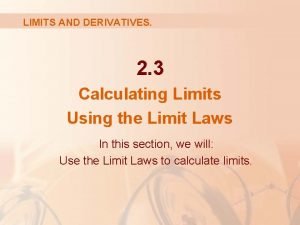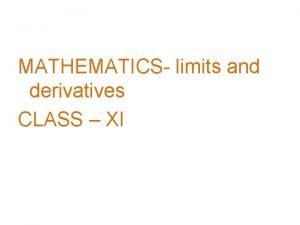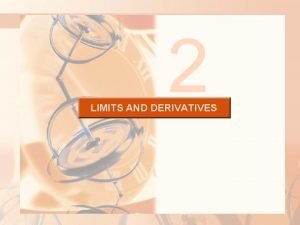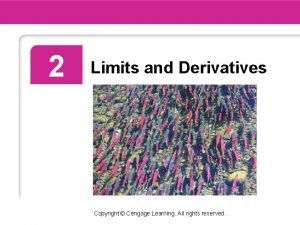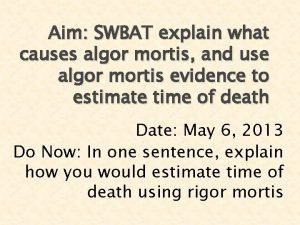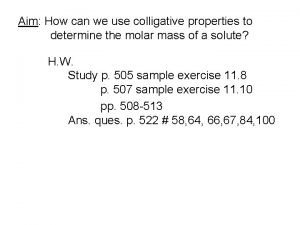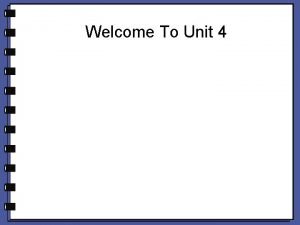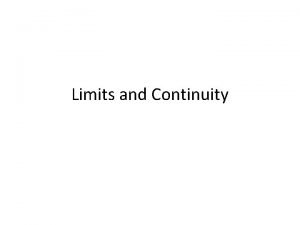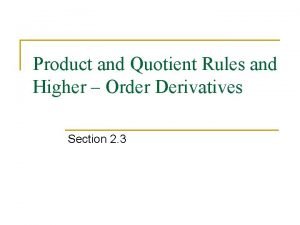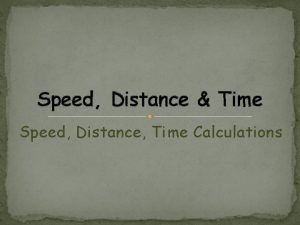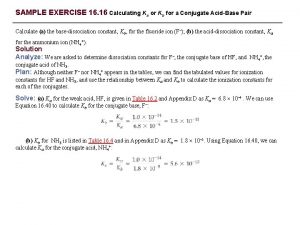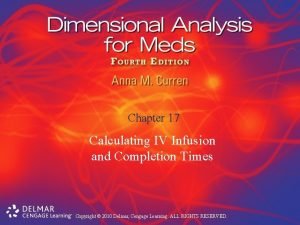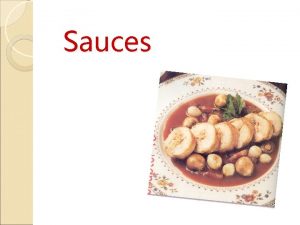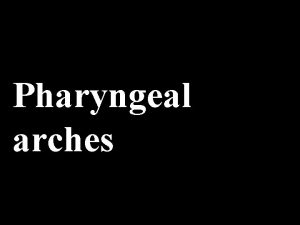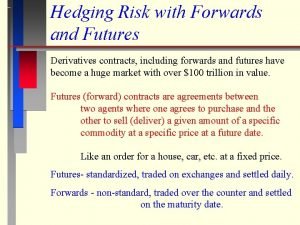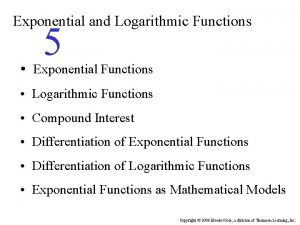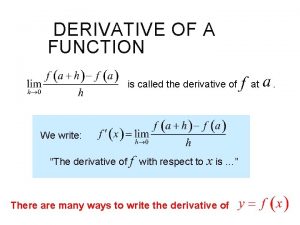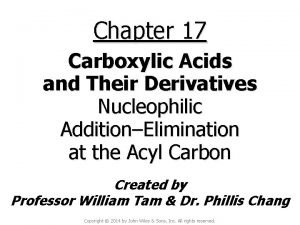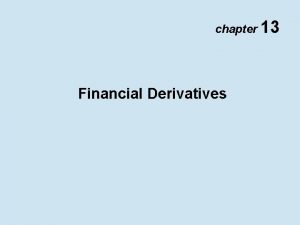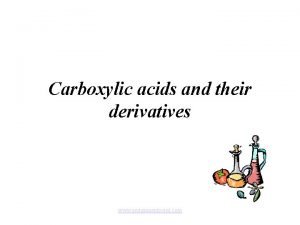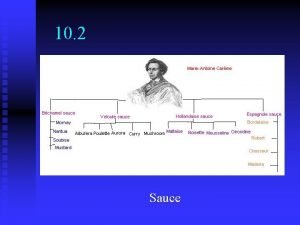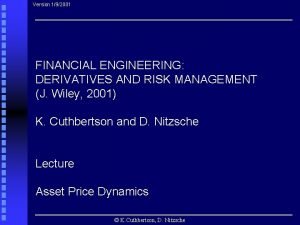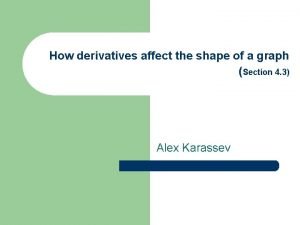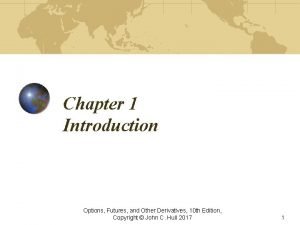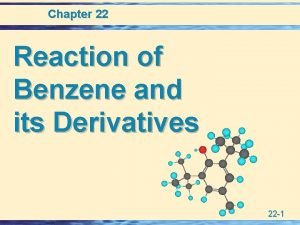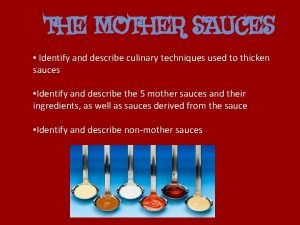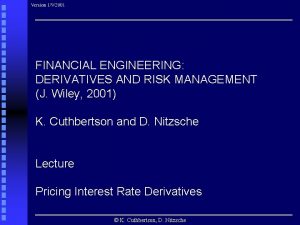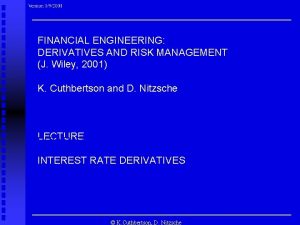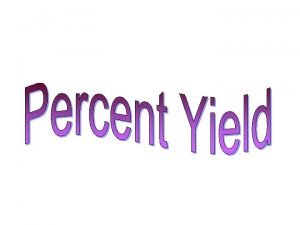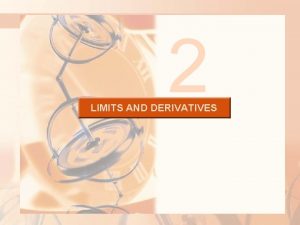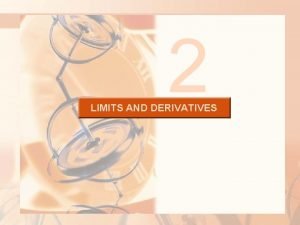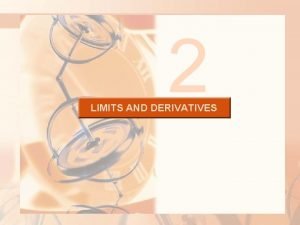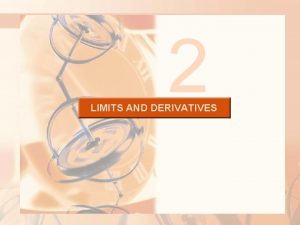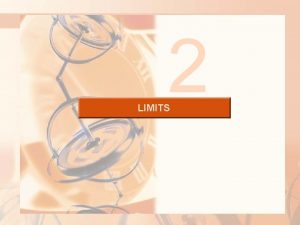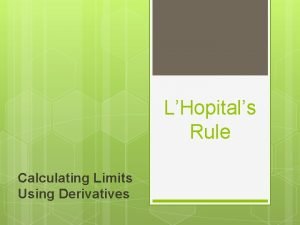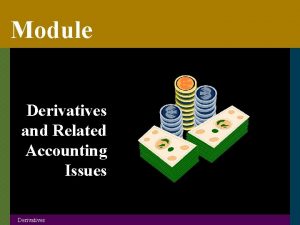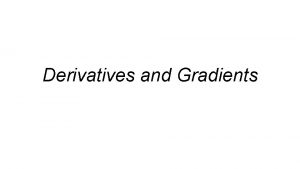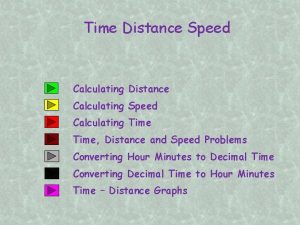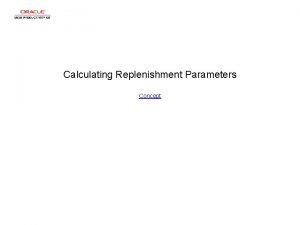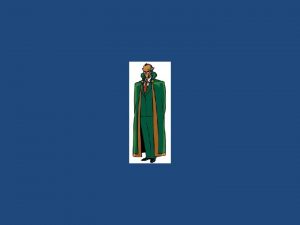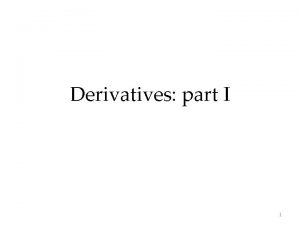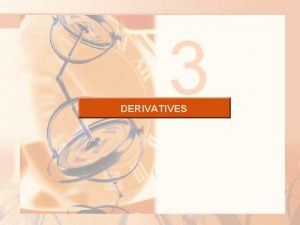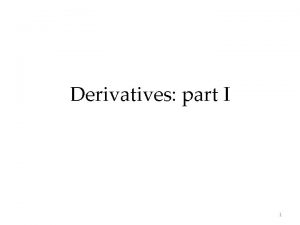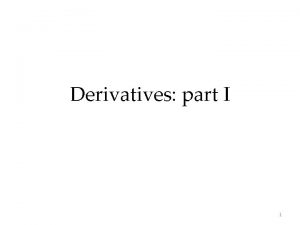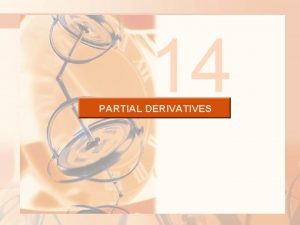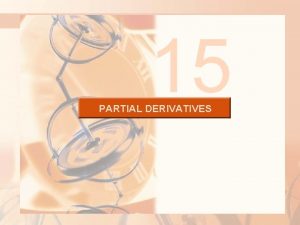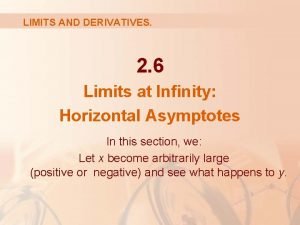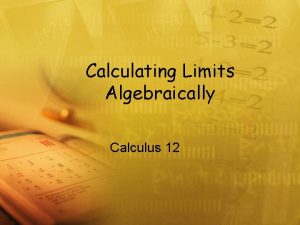LIMITS AND DERIVATIVES 2 3 Calculating Limits Using










































- Slides: 42

LIMITS AND DERIVATIVES. 2. 3 Calculating Limits Using the Limit Laws In this section, we will: Use the Limit Laws to calculate limits.

THE LIMIT LAWS Suppose that c is a constant and the limits and exist.

THE SUM LAW The limit of a sum is the sum of the limits. THE DIFFERENCE LAW The limit of a difference is the difference of the limits.

THE CONSTANT MULTIPLE LAW The limit of a constant times a function is the constant times the limit of the function.

THE PRODUCT LAW The limit of a product is the product of the limits. THE QUOTIENT LAW The limit of a quotient is the quotient of the limits (provided that the limit of the denominator is not 0).

USING THE LIMIT LAWS Example 1 Use the Limit Laws and the graphs of f and g in the figure to evaluate the following limits, if they exist. a. b. c.

USING THE LIMIT LAWS Example 1 a From the graphs, we see that and. § Therefore, we have:

USING THE LIMIT LAWS Example 1 b We see that. However, does not exist—because the left and right limits are different: and So, we can’t use the Product Law for the desired limit.

USING THE LIMIT LAWS Example 1 b However, we can use the Product Law for the one-sided limits: and § The left and right limits aren’t equal. § So, does not exist.

USING THE LIMIT LAWS Example 1 c The graphs show that and. As the limit of the denominator is 0, we can’t use the Quotient Law. § does not exist. § This is because the denominator approaches 0 while the numerator approaches a nonzero number.

THE POWER LAW If we use the Product Law repeatedly with f(x) = g(x), we obtain the Power Law. where n is a positive integer

USING THE LIMIT LAWS In applying these six limit laws, we need to use two special limits. § These limits are obvious from an intuitive point of view.

USING THE LIMIT LAWS If we now put f(x) = x in the Power Law and use Law 8, we get another useful special limit. where n is a positive integer.

USING THE LIMIT LAWS A similar limit holds for roots. § If n is even, we assume that a > 0.

THE ROOT LAW More generally, we have the Root Law. where n is a positive integer. § If n is even, we assume that .

USING THE LIMIT LAWS Example 2 Evaluate the following limits and justify each step. a. b.

USING THE LIMIT LAWS Example 2 a (by Laws 2 and 1) (by Law 3) (by Laws 9, 8, and 7)

USING THE LIMIT LAWS If we let f(x) = then f(5) = 39. Note 2 2 x - 3 x + 4,

USING THE LIMIT LAWS Note The functions in the example are a polynomial and a rational function, respectively. § Similar use of the Limit Laws proves that direct substitution always works for such functions.

DIRECT SUBSTITUTION PROPERTY We state this fact as follows. If f is a polynomial or a rational function and a is in the domain of f, then

USING THE LIMIT LAWS Example 3 Find § Let f(x) = (x 2 - 1)/(x - 1). § We can’t find the limit by substituting x = 1 because f(1) isn’t defined. § We can’t apply the Quotient Law because the limit of the denominator is 0. § Instead, we need to do some preliminary algebra.

USING THE LIMIT LAWS Example 3 We factor the numerator as a difference of squares. § The numerator and denominator have a common factor of x - 1. § When we take the limit as x approaches 1, we have and so.

USING THE LIMIT LAWS Example 3 § Therefore, we cancel the common factor and compute the limit as follows:

USING THE LIMIT LAWS Find Example 4 where § Here, g is defined at x = 1 and. § However, the value of a limit as x approaches 1 does not depend on the value of the function at 1. § Since g(x) = x + 1 for , we have. .

USING THE LIMIT LAWS Example 5 Evaluate § If we define , then, we can’t compute by letting h = 0 since F(0) is undefined. § However, if we simplify F(h) algebraically, we find that:

USING THE LIMIT LAWS § Recall that we consider only approach 0. § Thus, Example 5 when letting h

USING THE LIMIT LAWS Example 6 Find § We can’t apply the Quotient Law immediately—since the limit of the denominator is 0. § Here, the preliminary algebra consists of rationalizing the numerator.

USING THE LIMIT LAWS § Thus, Example 6

USING THE LIMIT LAWS Theorem 1 Some limits are best calculated by first finding the left- and right-hand limits. The following theorem states that a two-sided limit exists if and only if both of the one-sided limits exist and are equal. if and only if § When computing one-sided limits, we use the fact that the Limit Laws also hold for one-sided limits.

USING THE LIMIT LAWS Prove that Example 8 does not exist. § Since the right- and left-hand limits are different, it follows from Theorem 1 that does not exist.

USING THE LIMIT LAWS Example 8 The graph of the function is shown in the figure. It supports the one-sided limits that we found.

USING THE LIMIT LAWS Example 9 If determine whether § Since exists. for x > 4, we have: § Since f(x) = 8 - 2 x for x < 4, we have:

USING THE LIMIT LAWS Example 9 § The right- and left-hand limits are equal. § Thus, the limit exists and.

USING THE LIMIT LAWS Example 9 The graph of f is shown in the figure.

GREATEST INTEGER FUNCTION The greatest integer function is defined by = the largest integer that is less than or equal to x. § For instance, , , and § The greatest integer function is sometimes called the floor function. .

USING THE LIMIT LAWS Show that Example 10 does not exist. § The graph of the greatest integer function is shown in the figure.

USING THE LIMIT LAWS Theorem 2 If when x is near a (except possibly at a) and the limits of f and g both exist as x approaches a, then

USING THE LIMIT LAWS Theorem 3 The Squeeze Theorem states that, if when x is near (except possibly at a ) and , then § The Squeeze Theorem is sometimes called the Sandwich Theorem or the Pinching Theorem.

THE SQUEEZE THEOREM The theorem is illustrated by the figure. § It states that, if g(x) is squeezed between f(x) and h(x) near a and if f and h have the same limit L at a, then g is forced to have the same limit L at a.

USING THE LIMIT LAWS Example 11 Show that § Note that we cannot use § This is because does not exist.

USING THE LIMIT LAWS § However, since we have: § This is illustrated by the figure. Example 11 ,

USING THE LIMIT LAWS § We know that: Example 11 and § Taking f(x) = -x 2, , and h(x) = x 2 in the Squeeze Theorem, we obtain:
 Calculating limits using the limit laws
Calculating limits using the limit laws Ncert limits and derivatives pdf
Ncert limits and derivatives pdf Limits and derivatives
Limits and derivatives Limits and derivatives
Limits and derivatives Limit involving infinity
Limit involving infinity Real limits vs. apparent limits
Real limits vs. apparent limits Rigor mortis worksheet
Rigor mortis worksheet Calculating molar mass using colligative properties
Calculating molar mass using colligative properties Mechanism of death definition
Mechanism of death definition Continuity of a function
Continuity of a function Product and quotient rules and higher order derivatives
Product and quotient rules and higher order derivatives How to solve speed distance and time
How to solve speed distance and time Distance times speed
Distance times speed How to calculate speed
How to calculate speed You are calculating the 8 hour intake and output
You are calculating the 8 hour intake and output Calculating kb from ka
Calculating kb from ka Calculating infusion time and completion time
Calculating infusion time and completion time Speed distance and time worksheet
Speed distance and time worksheet Calculating speed distance and time
Calculating speed distance and time Mother sauces derivatives
Mother sauces derivatives Cleft and pouch
Cleft and pouch Hedging with forward contracts
Hedging with forward contracts Domain of log function
Domain of log function Log and exponential derivatives
Log and exponential derivatives Derivative formula
Derivative formula Carboxylic acid derivatives reactions
Carboxylic acid derivatives reactions Forwards vs futures vs options vs swaps
Forwards vs futures vs options vs swaps Carboxylic acid + nh3
Carboxylic acid + nh3 How to name carboxylic acids
How to name carboxylic acids Order of reactivity of carboxylic acid derivatives
Order of reactivity of carboxylic acid derivatives Mother sauces and derivatives
Mother sauces and derivatives Financial engineering derivatives and risk management
Financial engineering derivatives and risk management How derivatives affect the shape of a graph
How derivatives affect the shape of a graph Options futures and other derivatives
Options futures and other derivatives Acylation of benzene
Acylation of benzene Describe sauce
Describe sauce Trig identities
Trig identities Financial engineering derivatives and risk management
Financial engineering derivatives and risk management Financial engineering derivatives and risk management
Financial engineering derivatives and risk management Using system.collections
Using system.collections Defrost using internal heat is accomplished using
Defrost using internal heat is accomplished using How to calculate percentage yield in organic chemistry
How to calculate percentage yield in organic chemistry How to find the theoretical yield
How to find the theoretical yield
